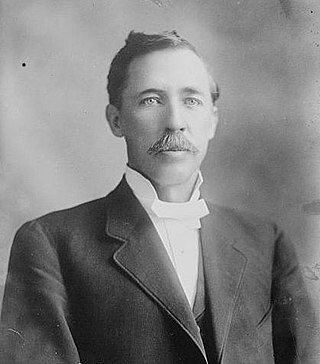
Lee Cruce was an American lawyer, banker and the second governor of Oklahoma. Losing to Charles N. Haskell in the 1907 Democratic primary election to serve as the first governor of Oklahoma, Cruce successfully campaigned to succeed Haskell to serve as the second governor of Oklahoma. As governor, Cruce was responsible for the establishment of the Oklahoma Department of Highways and the Oklahoma State Capitol. He worked hard to enforce prohibitions on alcohol and gambling, going so far as to use the state militia to stop horse racing. He was succeeded by Robert L. Williams.

William Sulzer was an American lawyer and politician, nicknamed Plain Bill Sulzer. He was the 39th governor of New York and a long-serving U.S. representative from the same state.

Martin Edwin Trapp was an American state auditor, governor and lieutenant governor of the U.S. state of Oklahoma. Oklahoma's third lieutenant governor, he was the first to become governor not through an election but instead due to the previous governor's impeachment and removal from office.

The 1912–13 United States Senate elections were held on various dates in various states. They were the last U.S. Senate elections before the ratification of the Seventeenth Amendment in 1913, establishing direct elections for all Senate seats. Senators had been primarily chosen by state legislatures. Senators were elected over a wide range of time throughout 1912 and 1913, and a seat may have been filled months late or remained vacant due to legislative deadlock. Some states elected their senators directly even before passage of Seventeenth Amendment. Oregon pioneered direct election and experimented with different measures over several years until it succeeded in 1907. Soon after, Nebraska followed suit and laid the foundation for other states to adopt measures reflecting the people's will. By 1912, as many as 29 states elected senators either as nominees of their party's primary or in conjunction with a general election.

The state auditor of Minnesota is a constitutional officer in the executive branch of the U.S. state of Minnesota. Nineteen individuals have held the office of state auditor since statehood. The incumbent is Julie Blaha, a DFLer.

The Oklahoma House of Representatives is the lower house of the legislature of the U.S. state of Oklahoma. Its members introduce and vote on bills and resolutions, provide legislative oversight for state agencies, and help to craft the state's budget. The upper house of the Oklahoma Legislature is the Oklahoma Senate.
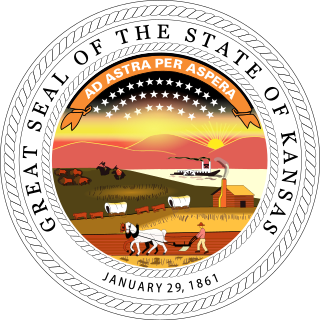
The Kansas House of Representatives is the lower house of the legislature of the U.S. state of Kansas. Composed of 125 state representatives from districts with roughly equal populations of at least 19,000, its members are responsible for crafting and voting on legislation, helping to create a state budget, and legislative oversight over state agencies. Representatives are elected to two-year terms. The Kansas House of Representatives does not have term limits. The legislative session convenes at the Kansas State Capitol in Topeka annually.

Carl R. Kositzky was a North Dakota public servant and politician with the Republican Party who served as the North Dakota State Auditor from 1917 to 1920.

The Oklahoma State Board of Equalization is an agency of the state of Oklahoma that is responsible for tax administration. The Board is responsible for adjusting and equalizing the valuation of real and personal property of the several counties of Oklahoma. Board is also responsible for providing an estimate of all revenue that will be available for appropriation by the Oklahoma Legislature for the coming fiscal year.
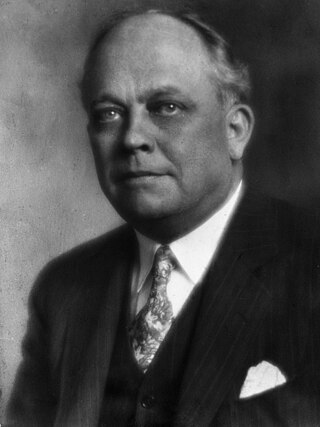
Ion Lowndes Farris was an American politician and attorney from the state of Florida. He served as both a member of the Florida House of Representatives and the Florida Senate. He served twice as the speaker of the Florida House of Representatives in both 1909 and 1913, at a time when the legislature met only once every two years. He then moved on to become a member of the Florida Senate for 1915 and 1917. He was an ardent supporter of former Governor of Florida Napoleon Broward, and led the effort to get Broward County named after him. He also led efforts to reduce the number of committees in the Senate. In 1916, he made a run for governor, but lost the Democrat primary. However, he led efforts to drain the Everglades, and forced the other candidates to take a position on the issue.

The 136th New York State Legislature, consisting of the New York State Senate and the New York State Assembly, met from January 1 to December 12, 1913, while William Sulzer, and then Martin H. Glynn, were Governor of New York, in Albany.
James Waddey "J.W." Clark was a justice of the Oklahoma Supreme Court from 1925 to 1933. He was born in Allisona, Williamson County, Tennessee to Joseph Poindexter and Cora Belle Waddey. After finishing public school, James became a traveling salesman, then went into the mercantile business, and finally went into business for himself. He took a course in law in 1907 and 1908, then enrolled in Cumberland University in 1909. By 1910, he had opened a law practice and won election to the Oklahoma legislature. In 1912, he was elected County Attorney for Atoka County, Oklahoma and was reelected after his first two-year term expired. In 1917, he returned to private law practice in Atoka, where he remained until he won election to the Oklahoma Supreme Court in 1924, filling a vacancy and taking office in 1925. He was reelected for a full 6-year term in 1926.
The Montana State Auditor is a constitutional officer in the executive branch of government of the U.S. state of Montana. The State Auditor is elected once every four years, concurrent with the state's gubernatorial election and the U.S. presidential election. The current State Auditor is Troy Downing, who was first elected in November 2020 and took office in January 2021.

The auditor of public accounts of Nebraska, more commonly known as the "state auditor", is an elected constitutional officer in the executive branch of the U.S. state of Nebraska. Twenty-five individuals have held the office of auditor of public accounts since statehood. The current auditor is Mike Foley, a Republican.

Leo Meyer (1873-1964) was a politician in Texas and Oklahoma and was the first Jew elected to statewide public office in Oklahoma.
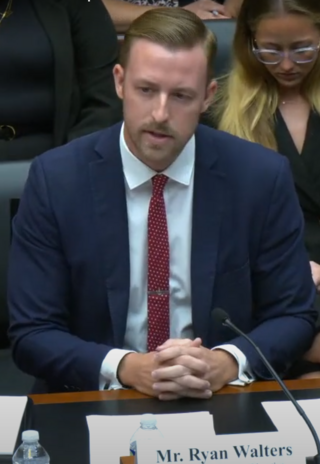
Ryan Walters is an American educator and politician who has served as the elected Oklahoma Superintendent of Public Instruction since 2023 and who served as the appointed Oklahoma Secretary of Education between September 2020 and April 2023.

Similar to the Congress of the United States, state legislatures can impeach state officials, including governors and judicial officers, in every state except Oregon. In addition, the legislatures of the territories of American Samoa, Northern Mariana Islands, and Puerto Rico have impeachment powers. Impeachment describes the process through which the legislature may bring charges and hold a trial with a penalty including removal from office.
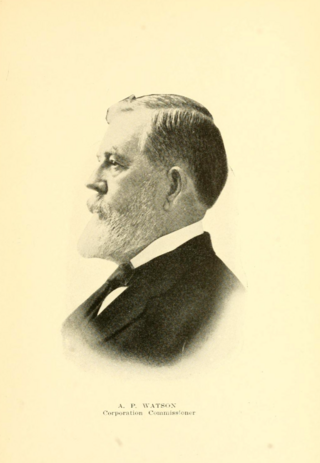
A.P. Watson was an American farmer, politician, and confederate officer who served as one of the first Oklahoma Corporation Commissioners from 1907 to 1915. He was frequently referred to as the "Potato King of Oklahoma" and was a member of the Democratic Party.
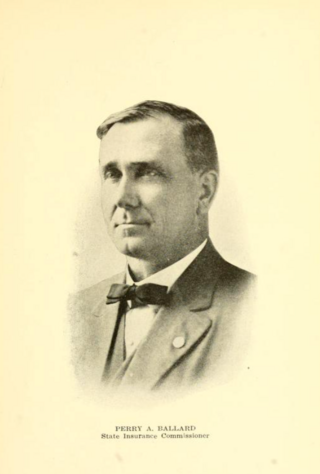
Perry A. Ballard was an American politician who served as the 3rd Oklahoma Insurance Commissioner between 1911 and 1913.

















